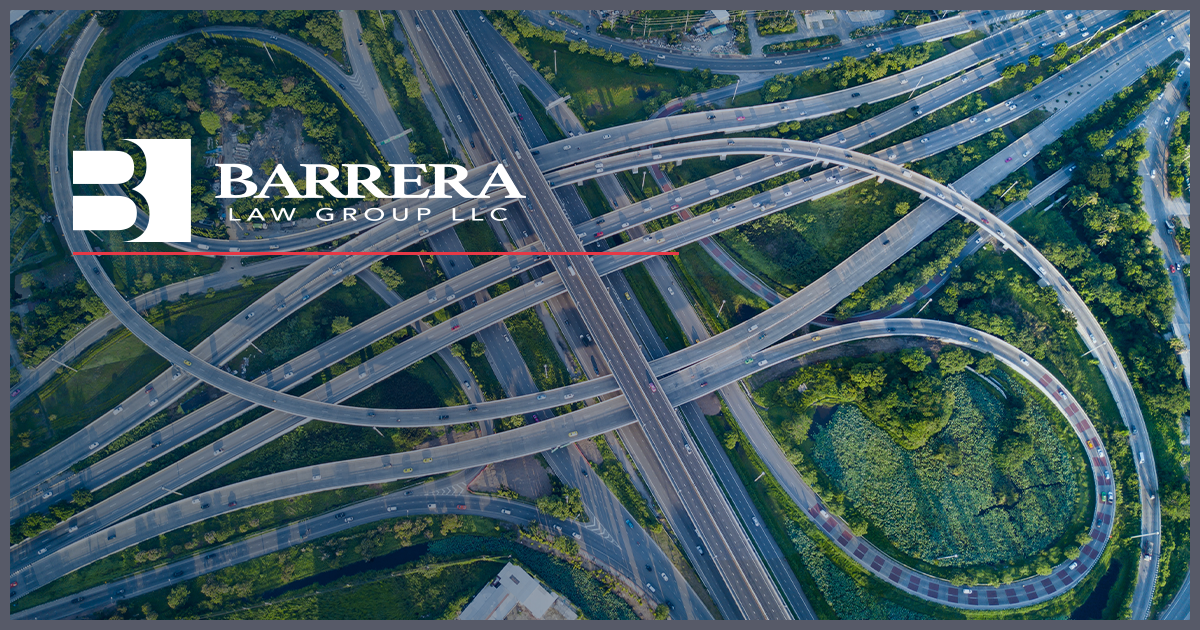
4.2 million. That is how many miles of highway there are crisscrossing the country. Most roads are part of the Interstate System, which got an official start in 1956 as part of the Federal-Aid Highway Act. Of course, there were plenty of roads before 1956, but with this act, major highways were built that connected cities from coast to coast.
The hallmark of a highway is its multiple lanes. Most highways have eight lanes, four in each direction. The Katy Highway, or Interstate 10, running through Texas, is the widest highway in the country, with twenty-six lanes along the portion west of Houston. Multiple lanes allow more cars to flow through traffic. Unfortunately, they also increase the risk of crashes.
Data collected from the New Mexico Department of Transportation shows that there were 40,884 highway crashes in 2022. Of that number, 12,670 injuries and 419 fatalities occurred. This doesn’t mean we should avoid driving on the highways. We just have to be aware of how accidents can occur and how to avoid them.
Common Types of Highway Accidents
The vast majority of highway accidents can be attributed to two causes: Bad weather or bad driving. You might not be able to control the weather that makes the road slick, but you can control if you’re speeding or driving distracted. The following are some of the common types of highway accidents.
Rear-End Collisions
The National Highway Traffic Safety Administration (NHSTA) conducted a survey that found 29% of crashes resulting in serious injuries were rear-end collisions. When everything goes according to plan, traffic should move at an even pace with plenty of braking distance between cars. If a driver is going too fast or not paying attention, they could find themselves slamming into the car ahead.
That might be an isolated crash or set off a chain reaction of collisions. That is the perfect scenario to speak to an experienced Albuquerque car accident attorney about. Your attorney can sort out who started the chain reaction and who should be held accountable.
Sideswipe Accident
Highways are ground zero for sideswipe accidents. No matter how many lanes there are on a highway, motorists must change lanes to keep up with the flow of traffic. They also have to yield to traffic as they enter or exit the highway. A sideswipe happens when one car isn’t paying attention and slides into a lane with an approaching vehicle.
Windshield Damage
Although not as common as other types of highway accidents, there can be times when debris on the road flies up and hits a car’s windshield. That debris can come from the back of a truck or an overhead pass. If something smashes into a car’s windshield, it’s not uncommon for the driver to lose control and end up in a wreck.
Staying Safe on Multi-Lane Freeways
Every driver owes a duty of care to their fellow motorists. That duty of care means being a responsible driver. These are the ways that you can uphold that duty on the highway:
Focus on the Road.
A driver needs to stay focused on the road ahead, behind, and on either side of the vehicle.
Staying alert means avoiding distractions like texting, making calls, eating, drinking, smoking, or applying makeup when driving. It also means not getting too involved with passengers in the backseat. They have a responsibility to not create problems, too.
Being focused also means driving alert. If you’re tired, you should pull over for a rest of a chance to catch a second wind. One minor nod-off behind the wheel can be disastrous.
Make Your Intentions Known
You know where you’re going, but no one else on the road has that information. That is why you want to make your intentions known by using your turn signal before changing lanes or exiting off the highway. You should also avoid crossing multiple lanes in one maneuver.
Share the Highway
If you’re on the highway, you need to share the lanes. That means moving to an adjacent lane to free up the lanes off the entrance ramps.
Be Aware of Blind Spots
The larger the vehicle, the larger the blind spot. You want to make sure you don’t stay in another car or truck’s blind spot for too long. If you can’t get ahead, you should consider slowing down.
Allow Greater Braking Distance
A car driving at the maximum highway speed limit would need the braking distance of a football field to come to a complete stop. That might only take a few seconds, but it would also involve slamming into cars that are too close ahead.
Slow Down
Speeding is a major cause of car accidents. The time you think you’re saving by driving fast isn’t worth the risk of getting into a collision. Driving at a lower speed helps you see any potential hazards ahead and allows you plenty of reaction time.
What to Do After a Highway Accident
If you’re involved in an accident on a highway, you’ll want to call for help immediately and only get out of your car if it is safe to do so. Once the scene has been cleared, you can focus on your next move of filing an insurance claim. If the accident was the fault of another driver’s negligence, you should also consider consulting with the Barrera Law Group, LLC. We’re in the best position to offer you advice and counsel on what should happen next.
The hope is that every trip on the highway will be a safe one. When it isn’t, get the right help.






